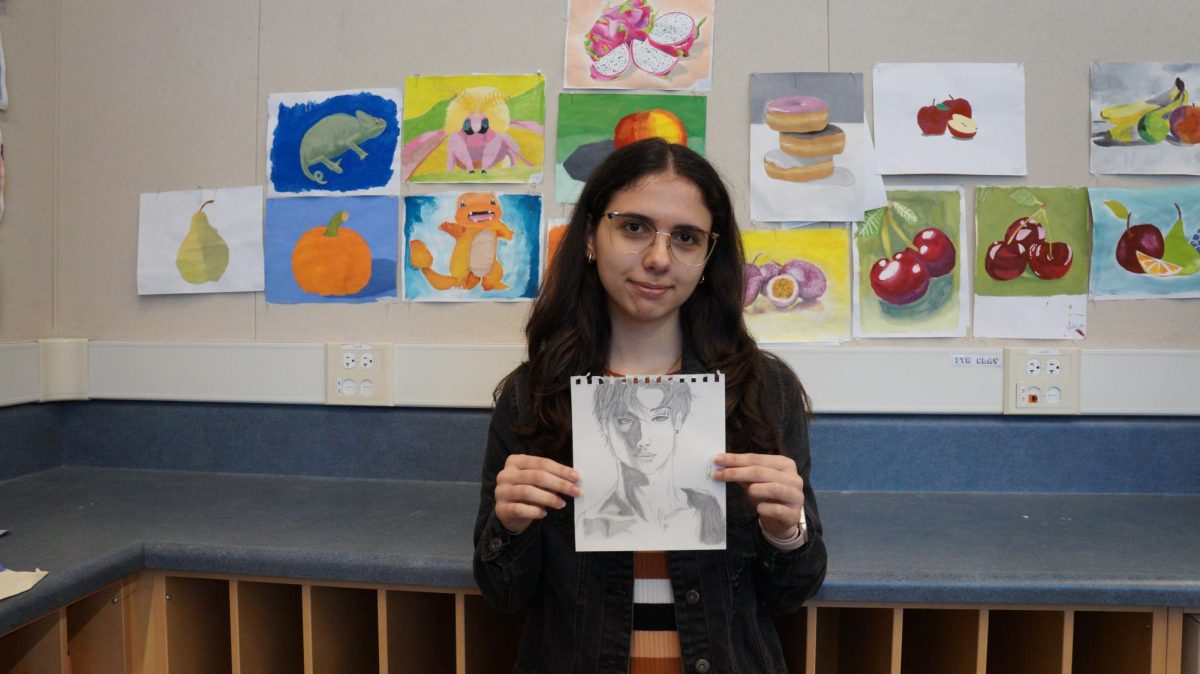During a two week period in May, students taking Advanced Placement courses write exams that cover year-long curriculum. While most classes follow this format, a few others, such as AP Art and AP Research, require students to submit work completed throughout the year.
Students are asked to create a portfolio or performance task, often with the topic of their liking. Art teacher Neil Woodman believes that the ability to develop these projects year-round brings many benefits to students.
“When you’re younger, you’re growing so fast. You might look back at a project from a month ago or two months ago and realize that you’re so much better now than you were two months ago,” Woodman said.
Due to students being required to create a personal project, classes are more individualized and self-paced. As a student in AP Art, senior Link Coniconde reflected on the difference between the class and other traditional AP classes.
“It’s more self-directed than other APs. We’re allowed to pick our theme, and we’re in charge of what our projects are and what materials we use,” Coniconde said.
The AP Art portfolio is a compilation slideshow of some of the best pieces of work that a student has created over the course of a year. Typically, students are encouraged to follow a theme relevant through the pieces in their portfolio.
“For my portfolio, I chose the themes of romance, fantasy and the macabre. I’ve always been most intrigued with those types of works, and so it felt like it made the most sense for me,” Coniconde said.
Along with their pieces, artists add a descriptive paragraph, explaining their theme and reason for execution. Woodman explained that the theme focuses on an inquiry question that guides the students’ work.
“The inquiry question can change over time because we don’t really know what we want to do,” Woodman said. “We pick a starting point, and then we start going from there.”
Aligning with Woodman’s explanation of shifts in theme, senior Ines Andrade highlighted the change in her work over time, noticing how her portfolio emphasized both successful and challenging pieces.
“I can see my improvement from the beginning of the semester and over the year,” Andrade said. “I captured my creativity overall, how there are ups, downs and challenges that are faced.”
Similar to how the AP Art students work year-round, the AP Research students are required to independently identify a problem and conduct a research study, ultimately presenting the results at the end with a paper and a presentation.
With the flexibility of the class, students are given the opportunity to research anything that speaks to them. Senior Tanisha Jain emphasized the importance of researching a topic that stands out to oneself.
“The main thing is that if there’s anything that you’re passionate about, any cause that you’re really interested about, you should write and focus your research on that,” Jain said.
Like Jain, senior Vedanth Vijay was able to pursue a project that he had been looking forward to since the beginning of high school.
“My project was on modeling and analyzing high school political ideologies,” Vijay said. “I’d probably say the main reason why it appealed to me was in how political theory in many cases tended to be practical implementations of different philosophical movements throughout history.”
Once they identify a topic, students follow a structured timeline to complete their study.
“In the first semester, you research many different subtopics within your overall topic,” Jain said. “Then, you find a lot of sources to write about what makes up your entire body of knowledge and what things are already out there about your topic. In the second semester, that’s when you conduct your study and present your findings to a panel.”
In both AP classes, individuals are given the opportunity to pursue their passion through different academic mediums. Whether through a research project or a built-up portfolio, students are grateful for the personalized year-long efforts.
“You can make it as unique in your own way as possible because no one’s going to be there to criticize every detail. They just want to see your unique skills and how you execute it,” Andrade said.


